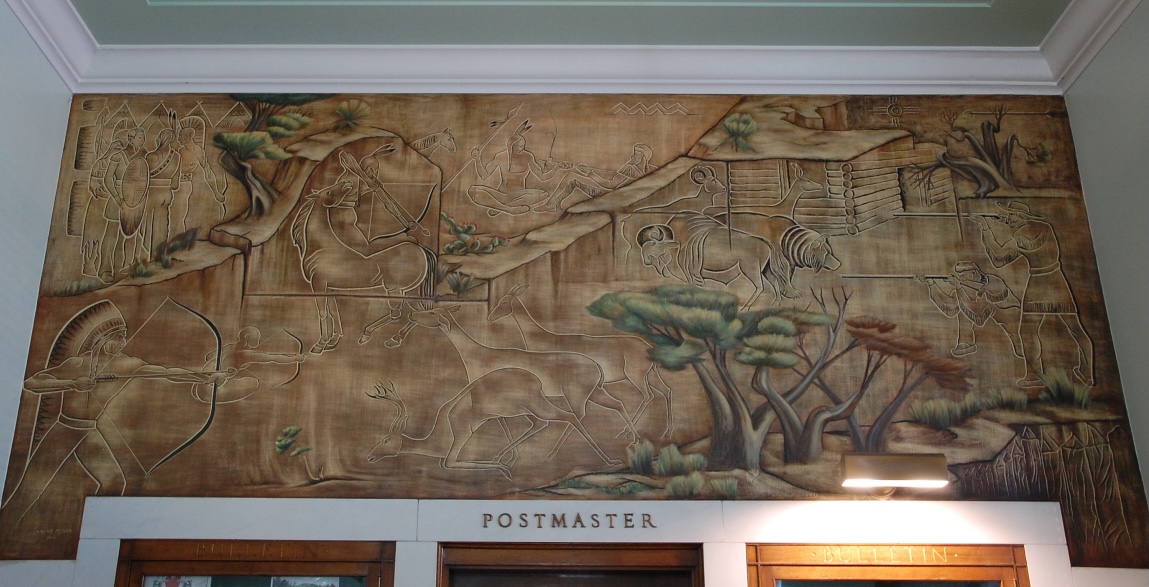This area has been home to extraordinary muralists, lithographers, sculptors, photographers, ceramicists and painters. Many were fun, adventurous and thoroughly interesting people. Unlike us ordinary dullards, artists seek to create beauty and somehow make a living doing it.
So, here’s the question: Of all the now-deceased artists who have lived and worked in Manitou Springs, Old Colorado City and the Pikes Peak region, which were the most fun? With whom would you like to share a table at your favorite bar/restaurant, open a bottle of mediocre champagne and prepare to amuse and be amused?
Let’s start with Archie Musick (1902-1978), whose autobiographical memoir “Musick Medley: Intimate Memories of a Rocky Mountain Art Colony” is mischievous, fun and bawdy. Like most of his fellow artists and art students in the 1920s and ’30s, he was usually broke, always ready for a party and delighted by almost everything.
To read it is to laugh at their antics and mourn your own misfortune: born too late! But that’s OK — Archie’s spirit and work endures. The extraordinary house that he designed and built near the Garden of the Gods is now occupied by his daughter Pat, a fun and significant artist in her own right.
Harvey Otis Young (1840-1901) had two careers, both of them exhausting, romantic and adventurous. Born in a small Vermont town, he left New England headed for the California gold fields in 1859. He scraped by as a placer miner for a few years, quit mining when the gold ran out and hung out his shingle as a fine artist — although one without instruction or experience. Surprisingly, he made a go of it, moved to New York and then made the first of five trips to Europe.
For the next three decades, he traveled throughout the West, painted tirelessly, made and lost fortunes in Colorado mining ventures, living in Aspen, Denver and Manitou Springs. His once-prosaic work became brilliantly original in his later years, when he gave up mining and concentrated on painting. He died at the apex of his artistry – but his work remains.
Adolf Dehn (1895-1968) was one of the most successful artists in America from the late 1920s to the 1960s. He was also a noted bon vivant, and an artist who, according to his biographer Henry Adams, “dealt frankly with aspects of the human comedy that were considered off-limits — prostitutes, fat burghers, nightclub entertainers and impoverished street people.”

His life was also a little off-limits, starting with his Minnesota high school sweetheart Wanda Gag, then Russian dancer Mura Ziperovitch, then poet Ilene Lake — it’s a long list! He loved moving around the country, but he never learned to drive.
Visiting Colorado Springs in 1938, he was chauffeured by his girlfriend Elizabeth Timmerman. He loved our little city, and taught at the Fine Arts Center for three summers. Partnering with master printer Lawrence Barrett, Dehn created scores of extraordinary lithographs and enjoyed life in Colorado Springs. He even gave his lithographs risqué titles, such as “Naked Truth Pursued by Bare Facts.”
With whom would you like to share a table?
Eric (1916-2020) and Mary Ann Bransby (1921-2011) met at art school and married in 1941, two days before Pearl Harbor. They were together for 70 years, and are remembered for much more than longevity. They were both talented artists; he as a muralist and painter, she as a ceramicist, silversmith, sculptor and painter. She was smart, resourceful and tough, while Eric was smart, resourceful and gentle.
“Eric, of course, was a pussycat,” former Colorado Springs artist Tracy Felix said. “Mary Ann was an artist in her own right, but very tough. … She tried extra hard to stand out as much as she could from Eric, to have her own identity. I admired that. She fought for herself.”
Eric painted more than 20 large-scale murals during his life, including a particularly grand one in the Pioneers Museum. He was often photographed at work, and one thing stands out — he’s always smiling.
Finally, consider the twin sisters Jenne (1916-1952) and Ethel (1916-1993) Magafan. Born in Chicago, they came to Colorado Springs in the thirties and studied with Frank Mechau, Boardman Robinson and Peppino Mangravite.
In those days, “studied with” meant “worked like dogs for.” They learned quickly, and both became serious and consequential artists. At 22 years old, Jenne had a one-person show at the Denver Art Museum, and both executed multiple murals around the country in the late 1930s. They were by all accounts fun and beautiful, as Archie Musick recalled (and period photos confirm!).
Musick and his artist pals frequently had men-only “mulligan” parties, but the twins ended their sexist soirees.
“One evening Frank Mechau broke all protocol by barging in with his two apprentices, the young Magafan girls,” Musick wrote. “We had to confess that they did add a new ray of sunshine with their effervescent personalities. After that, the mulligans were of mixed company.”
Wish we had been there!!

